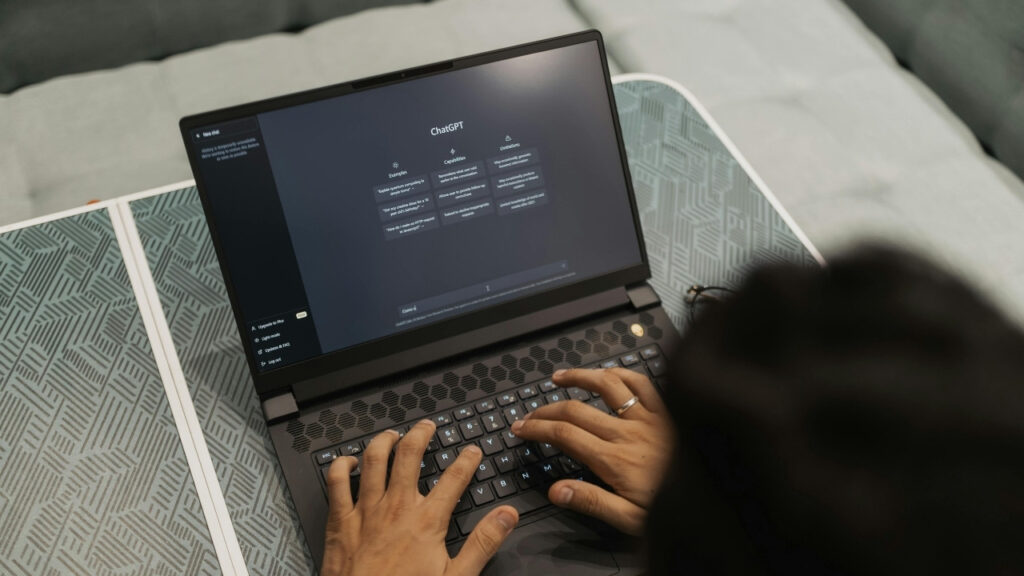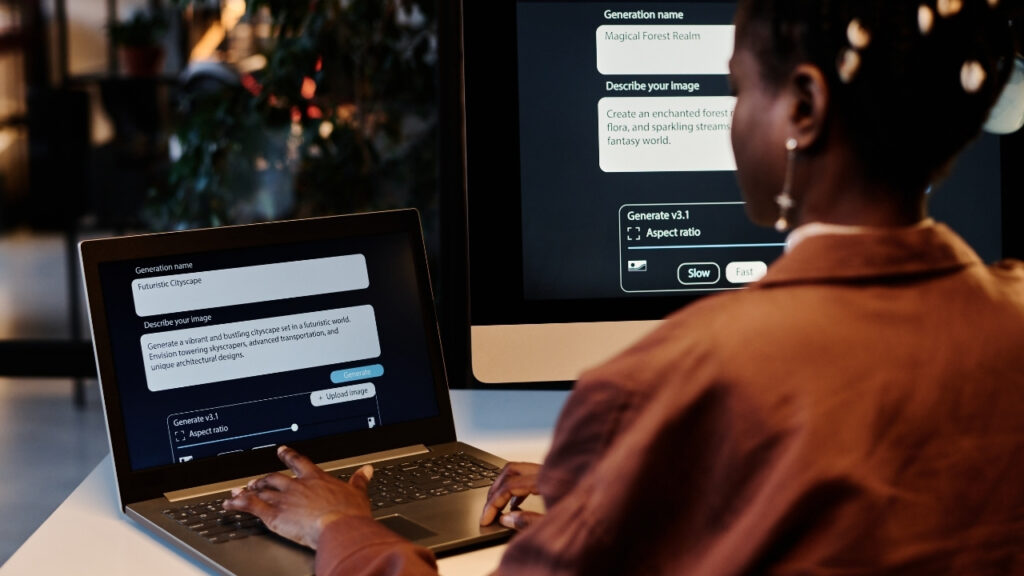The Crazy Truth — It’s Already Half the Planet’s Classrooms
You wanna know what’s really nuts? We’re not talking about some tech fad here. AI’s basically living rent-free in half the world’s classrooms right now.
Numbers don’t lie — a massive global survey in 2024 said about 54 % of students are hitting AI tools weekly, and a quarter of them are using it daily. That’s not kids messing around once in a while. That’s routine, like morning coffee or scrolling TikTok before bed.
Let that sink in — billions of students worldwide, and roughly half are using AI to write, learn, fix homework, brainstorm ideas, or just make life easier. That’s not “future tense” — that’s happening this week.

Nobody Waited for Permission
Schools didn’t hand out manuals or rules. Students just jumped in.
Universities were still writing “AI policies,” professors were arguing about plagiarism, and students were like — “Cool, whatever, I’m already using ChatGPT to finish my outline.”
That’s how every tech wave starts. The people on the ground move first. By the time the suits realize it’s big, it’s already too late to control it.
Look around — in India’s college scene, one study said half of Delhi students use AI multiple times a week. In the U.K., it’s even crazier — over 90 % of students have used AI at least once. In the U.S., about two-thirds of college kids are on chatbots weekly.
When every second student is using something that fast, it stops being “technology” and starts being culture.
Why the “Weekly” Part Is a Big Deal
You’ll hear people brag, “Yeah, I’ve tried AI once.”
That’s cute. “Weekly or more” is the real marker. That’s the sign it’s baked into your rhythm.
If a student’s using AI weekly, they’re not experimenting — they’re depending on it. It’s like having a digital sidekick:
- “Hey, clean up my essay draft.”
- “Summarize this 40-page PDF.”
- “Give me 10 project ideas that don’t suck.”
And AI answers instantly, no office hours, no grading bias, no judgment.
That’s the magic. That’s why it sticks. Once you get used to that feedback loop — you never really go back.
What They’re Actually Doing With It
Let’s be real — students aren’t sitting there coding robots or building the next OpenAI model. Most use it for straight-up survival stuff:
- Essay help – brainstorming, polishing, fixing grammar
- Summaries – turning a 10-page reading into two paragraphs that actually make sense
- Explaining tough stuff – “Bro, explain quantum physics like I’m five.”
- Tutoring – math steps, coding help, rephrasing answers
- Language fix – for international students, AI’s basically Grammarly on steroids
It’s not about cheating; it’s about speed. Nobody’s got time to spend 8 hours formatting citations when AI can do it in ten seconds.
And if you think professors don’t know, you’re kidding yourself. They know. Half of them are using AI too — just pretending they aren’t.
Why Schools Are Freaking Out
Traditional education runs on a system built for the 1990s. Homework, essays, plagiarism checkers — all built for a world before generative text.
Now, that entire setup’s cracking. Because if AI can write an essay that passes Turnitin, what’s the point of pretending the old system still works?
Colleges are starting to pivot — some are banning AI outright, others are saying, “Fine, use it, but tell us how.”
And then there’s the smart ones — they’re making assignments where using AI is part of the grade.
They’re like: “Use AI to research, but then explain what it got wrong.” That’s how real-world work looks.
Weekly AI users are already living in that new model. They’re basically beta-testing the future while everyone else debates whether it’s allowed.
The Data Paints a Big Picture
Here’s how the breakdown looks when you zoom out:
- Global average: about 54 % use AI weekly, 24 % daily.
- U.S. colleges: about 65 % weekly users.
- India: 50 % weekly, 23 % daily.
- U.K.: 92 % have used AI in some way.
- Global total: about 810 million students using AI weekly — maybe more by now.
If you stretch that trend a couple of years, that’s heading toward a billion people. Think about that — a billion students using AI as casually as checking email.
That’s not a wave anymore. That’s the new normal.
How Fast This All Happened
You blinked, and the world changed.
At the start of 2023, most students were like, “What’s ChatGPT?”
By mid-2024, half of them couldn’t imagine studying without it.
This wasn’t slow evolution — it was a cultural explosion.
And the reason it spread so fast? It worked.
Students didn’t need training. The interface was just text. You ask; it answers. You learn faster. Done.
No software downloads, no lectures, no permission slips. You just open a chat box and suddenly you’ve got a research assistant, proofreader, and tutor rolled into one.
You think kids are gonna turn that down? Please.
Not Every Country’s on the Same Page
The gap between countries is massive, though.
- In tech-heavy regions like the U.S., Korea, Singapore — weekly use is high, even creeping toward 70 %.
- In less-connected areas, or places where schools are stricter about AI, adoption’s slower.
But give it a couple years. As phones get cheaper and tools get local-language support, those barriers vanish fast.
We’ve seen it with every big tech shift — from social media to smartphones — first it’s uneven, then it’s everywhere.
AI’s following the same playbook.
Professors Are Split Down the Middle
Walk into any college right now, you’ll hear two kinds of professors.
Type 1: “AI is cheating. Ban it.”
Type 2: “AI is here. Let’s teach them how to use it right.”
Guess which group’s gonna survive the next decade?
The second one.
Because banning AI is like banning calculators in 1985 — it just makes you look outdated.
Some forward-thinking schools are already rewriting assignments. Instead of “write an essay,” it’s “compare your essay to AI’s version.” That’s where things get interesting — students learn to spot bias, bad logic, lazy phrasing.
And here’s the fun part — students who use AI regularly actually write better. Because they iterate more, they experiment, they see how tone, style, and flow change instantly. That’s active learning, not cheating.
The Hidden Divide Nobody’s Talking About
AI access is the new version of the “digital divide.”
If you’ve got a good laptop, solid Wi-Fi, and an English interface — congrats, you’re getting smarter faster.
If you’re in a low-resource school with slow internet or old devices, you’re locked out. That’s the next inequality wave — not just money, but access to smart tools.
Governments and schools better wake up, because this isn’t optional anymore.
Half the planet’s students are already in AI mode. The other half risks being left behind — not because they’re less smart, but because they’ve got worse bandwidth.
How This Changes Education Forever
Alright, here’s the bigger picture: weekly AI use isn’t just a study habit. It’s a system breaker.
1. The death of busywork
Students aren’t writing 10-page reports by hand anymore. They’re prompting, editing, refining. The grind work’s gone.
2. Smarter feedback loops
AI gives instant responses. No waiting a week for grades. That speeds up learning like crazy.
3. Teachers become coaches
With AI handling basics, teachers focus on deeper thinking — ethics, creativity, analysis. The classroom flips from lecture to conversation.
4. New cheating gray zones
Old rules can’t handle this. If AI rewrites your draft, is that cheating or editing? Nobody agrees yet.
5. The skill shift
It’s not about knowing everything anymore. It’s about knowing how to ask the right thing. Prompting is the new literacy.
The Real Reason Students Won’t Stop
Forget grades. Forget assignments. The reason students use AI weekly is simple — it works.
It saves time, reduces stress, and gives them control.
In a world where college debt’s insane and burnout’s normal, that matters.
They can knock out a paper, prep for a quiz, and learn faster. Who’s gonna say no to that?
And the funniest part — AI’s become kind of a silent partner. Most students don’t even brag about using it. It’s just another tab open while they work.
You wouldn’t tell someone, “Hey, I used Google today.”
Same energy. AI’s just part of the workflow.
What’s Coming Next
You think 54 % weekly use is high? Give it a year or two.
Between Microsoft Copilot, Google’s Gemini, and AI tools baked into every app from Canva to Word, the line between “using AI” and “just doing your work” disappears.
By 2026, we’re probably talking 70 %+ weekly users easily. Maybe more.
AI won’t be the extra thing you open — it’ll just be there. Your doc app finishes your thought, your slide deck writes itself, your code fixes while you type.
At that point, asking “how many use AI weekly” becomes meaningless. It’ll be like asking how many people use electricity daily.
The Numbers Aren’t Even Catching Up
All those 2024 and early-2025 surveys are already outdated.
Every semester, the curve spikes. AI usage grows faster than institutions can track.
Even if the global number’s “54 %,” that’s from last year. By now? Probably closer to 60 – 65 %.
And remember, some students hide it. If you’re at a strict school, you’re not raising your hand saying, “Yeah, I used ChatGPT.” So those surveys undercount the real number.
The truth? The real weekly-use number might already be way higher than anyone wants to admit.
This Ain’t About Cheating — It’s About Changing
People freak out thinking AI makes kids lazy. Nah — it’s making them strategic.
They’re learning how to get the same job done smarter. That’s what every generation does when new tools show up.
When calculators came, they said “students will forget math.” They didn’t. They just stopped wasting time on basic arithmetic.
Same story here. AI doesn’t make students dumber — it makes them faster, more efficient, and a little more ruthless about time.
You can’t knock that hustle.
So What’s the Endgame?
Education’s not dying; it’s mutating.
We’re heading toward a world where AI is like oxygen — invisible but everywhere. The real challenge is teaching people how to think with it, not think instead of it.
When half of global students use AI weekly, you’re not debating if it’s good or bad. You’re debating how to make it fair, ethical, and creative.
That’s the next frontier.
Wrapping It Up
So yeah — when you ask, “How many students use AI weekly?”
The short answer? About half the planet.
The long answer? Way more than we can measure.
AI isn’t sneaking into classrooms anymore — it’s sitting in the front row.
And the real story isn’t about tech. It’s about adaptation. Every generation has its moment when the tools change faster than the rules — this is ours.
The students aren’t waiting for policy memos or permission slips. They’re already building the new way of learning, one prompt at a time.
And the rest of the world?
It’s playing catch-up.
